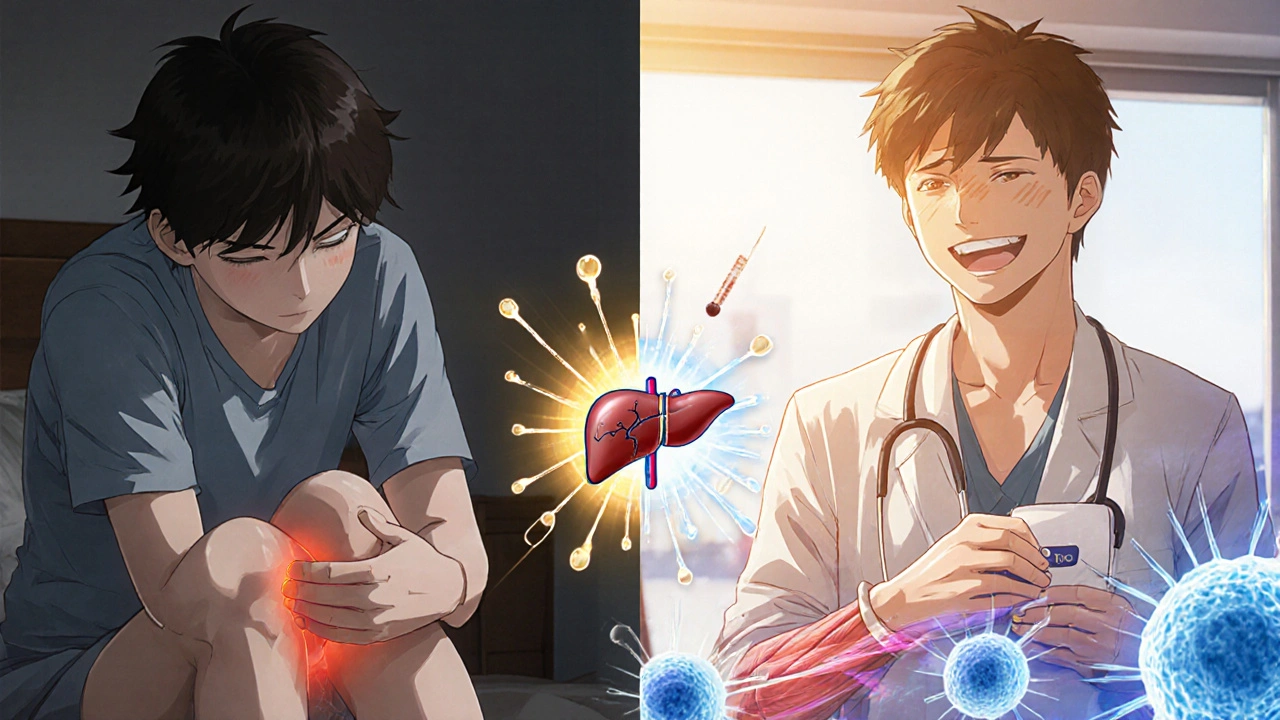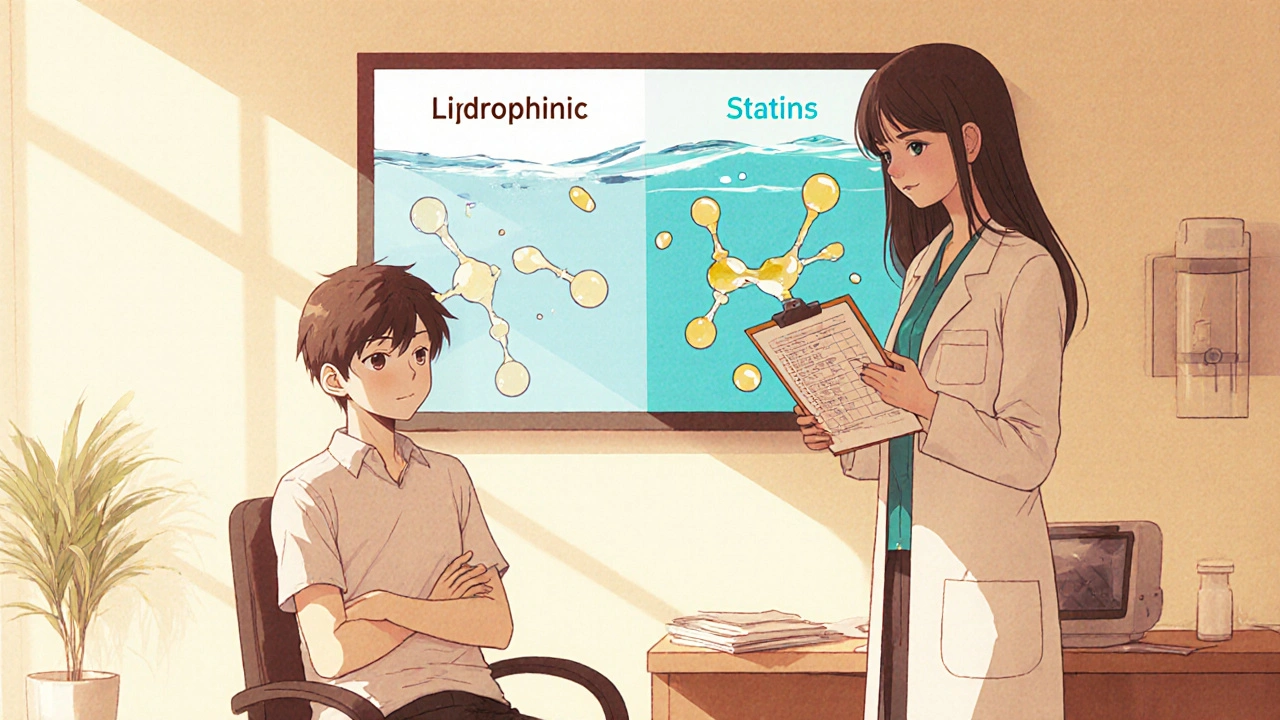Statin Intolerance Assessment Tool
How This Tool Works
Based on the National Lipid Association's 2022 criteria, this assessment helps determine if your symptoms are likely due to true statin intolerance or other factors. It guides you toward appropriate next steps.
For millions of people taking statins to lower cholesterol, the drug works - until it doesn’t. Muscle pain, weakness, or fatigue start showing up after a few weeks. They blame the statin. Their doctor says, "Stop it." And just like that, a life-saving medication gets dropped - often permanently. But what if the problem isn’t the statin itself, but how it was handled? That’s where statin intolerance clinics come in.
What Really Counts as Statin Intolerance?
Most people think statin intolerance means you can’t take any statin without side effects. But that’s not how the science defines it. The National Lipid Association updated its definition in 2022: statin intolerance is when you have symptoms tied to statin use that go away when you stop, and come back when you try again. It’s not just feeling a little sore. It’s symmetric muscle pain in your thighs or shoulders, starting 2-4 weeks after starting the drug, and clearing up 2-4 weeks after stopping.
Here’s the catch: up to 80% of people who say they’re intolerant might actually tolerate statins - if tested properly. A 2022 JAMA Internal Medicine study found that many patients stop statins based on vague symptoms, without a controlled rechallenge. That’s where clinics step in. They don’t just take your word for it. They test it.
The Four-Step Protocol That Works
Top statin intolerance clinics follow a clear, step-by-step process. It’s not guesswork. It’s a protocol.
- Stop the statin. You’re taken off all statins for at least two weeks. No exceptions. This gives your body time to reset.
- Rule out other causes. Low vitamin D? Underactive thyroid? Alcohol use? Certain supplements like red yeast rice? These can mimic statin side effects. Clinics check blood levels for these before jumping to conclusions.
- Rechallenge with a different statin. Instead of going back to simvastatin (the most common culprit), you try a hydrophilic statin like rosuvastatin or pravastatin. These don’t leak into muscle tissue as easily. In Cleveland Clinic’s 2021 study, switching to rosuvastatin helped 72% of patients who thought they couldn’t tolerate statins.
- Try intermittent dosing. If daily dosing still causes issues, you might switch to taking rosuvastatin or atorvastatin just twice a week. A 2021 study of 1,247 patients showed 76% could tolerate this approach and still lower LDL by 20-40%.
This isn’t theoretical. Kaiser Permanente’s program reduced permanent statin discontinuation from 45% in general practice to just 18% in their clinic. That’s a 60% drop in patients giving up on a proven therapy.
Why Some Statins Are Easier to Tolerate
Not all statins are created equal. The difference comes down to chemistry.
Lipophilic statins - like simvastatin, atorvastatin, and lovastatin - are fat-soluble. They slip easily into muscle cells, which is why they’re more likely to cause muscle pain. Hydrophilic statins - rosuvastatin and pravastatin - are water-soluble. They’re designed to be pulled into liver cells by special transporters, and mostly stay out of muscle tissue.
That’s why switching from simvastatin to rosuvastatin isn’t just a random change. It’s a targeted move. A 2021 study in CCJM showed that patients who switched from lipophilic to hydrophilic statins had a 72% success rate in staying on therapy. That’s the single most effective strategy in the playbook.

When Statins Still Don’t Work: Non-Statin Options
Some people truly can’t take any statin - even at low doses or intermittently. For them, the guidelines are clear: add a non-statin drug.
First-line? Ezetimibe. It’s cheap - about $35 a month - and proven to reduce heart attacks and strokes by 6% in the IMPROVE-IT trial. It works by blocking cholesterol absorption in the gut. No muscle pain. No rechallenge needed.
Second-line? Bempedoic acid (Nexletol). Approved in 2020, it lowers LDL by about 18% without muscle side effects. It’s activated only in the liver, so it doesn’t touch muscle. Cost? Around $491 a month. Insurance often blocks it unless you’ve tried everything else.
For high-risk patients - those with a history of heart attack or stroke - PCSK9 inhibitors like evolocumab can drop LDL by 60%. But at $5,850 a year, access is a major hurdle. One patient on the Inspire forum spent 11 weeks and four insurance appeals just to get approval.
What Clinics Do That Regular Doctors Don’t
Most primary care doctors don’t have the time or tools to run a proper statin rechallenge. They rely on patient reports and a single blood test. Clinics do more.
- They use symptom diaries: patients log pain location, severity (0-10 scale), and timing relative to doses.
- They check CK levels - creatine kinase - but only use them as a guide. The 2022 NLA guidelines say clinical symptoms matter more than lab numbers.
- They involve pharmacists. At Cleveland Clinic, pharmacists lead the rechallenge process. Their structured approach improved outcomes by 22% compared to doctor-only care.
- They use the ACC’s Statin Intolerance Tool (launched 2023), which calculates your heart risk versus your side effect risk. It tells you: "Is skipping statins worth the extra 15% chance of a heart attack?"
These aren’t luxury extras. They’re the difference between giving up and getting back on track.

Real Stories From Real Patients
"I was labeled statin intolerant for five years," says a Reddit user named HeartPatient87. "I had LDL at 142. My doctor said, ‘You’ll have to live with it.’ Then I went to Johns Hopkins’ lipid clinic. They put me on rosuvastatin 5mg twice a week with CoQ10. My LDL dropped to 89. No pain. No more fear."
Kaiser Permanente’s patient surveys show 82% of people in their program were able to resume lipid-lowering therapy. In regular clinics? Only 45%.
But it’s not perfect. Wait times for these clinics are long - 6 to 8 weeks on average. And insurance still fights coverage for non-statin drugs. One patient wrote: "They approved ezetimibe. Denied bempedoic acid. Said I didn’t have ‘enough’ heart disease. But I had a stent in 2021."
The Bigger Picture: Why This Matters
Statins cut heart attacks and strokes by 20-25% for every 1 mmol/L drop in LDL. That’s not a small win. It’s life-saving. Yet, 18% of people who should be on statins aren’t - because they think they can’t tolerate them.
Statin intolerance clinics aren’t about finding excuses to avoid medication. They’re about finding the right way to take it. They turn a dead end into a detour.
With 39 million Americans on statins, and 2.7 to 11.3 million reporting side effects, this is a growing need. Sixty-three of the 100 largest U.S. health systems now have formal protocols. Academic centers lead the way - 87% have them. Community hospitals? Only 42%.
The future is here: genetic testing for SLCO1B1 variants (which predict simvastatin muscle risk) is already being used at Mayo Clinic. Nanoparticle statins - designed to deliver the drug only to the liver - are in early trials and showing 92% tolerability. But right now, the best tool is simple: a structured plan, a second try, and the right statin.
What You Can Do Today
If you’ve stopped a statin because of muscle pain:
- Don’t assume it’s permanent. You might be one switch away from success.
- Ask your doctor for a referral to a lipid specialist or statin intolerance clinic.
- Keep a symptom diary for the next two weeks after stopping - note pain, timing, and what you were doing.
- Request a vitamin D and thyroid test. These are cheap, easy, and often overlooked.
- If you’re told to avoid statins forever, ask: "What about rosuvastatin twice a week? Or ezetimibe?"
This isn’t about being stubborn. It’s about not giving up on a treatment that’s saved millions of lives - because the first try didn’t work.
Can you really get back on statins after being labeled intolerant?
Yes - and many people do. Studies show that up to 70% of patients who thought they were intolerant can tolerate a different statin or a lower, less frequent dose. The key is a structured rechallenge under supervision, not just stopping and never trying again.
Are statin side effects just in my head?
No - muscle pain from statins is real. But the nocebo effect (expecting side effects makes you feel them) plays a bigger role than most realize. A 2022 study found that when patients didn’t know they were taking a statin, only 15% reported muscle pain - even though the drug was identical. That’s why controlled rechallenges are so important.
Is ezetimibe as good as a statin?
Not quite - but it’s close enough for many. Statins reduce heart events by 20-25% per 1 mmol/L LDL drop. Ezetimibe reduces LDL by about 18% and lowers heart events by 6% in high-risk patients. It’s not a replacement, but it’s a proven, safe, and affordable backup when statins aren’t an option.
Why do some doctors just say "stop the statin" and leave it at that?
Most primary care doctors don’t have the time, tools, or training to run a rechallenge. They’re pressured to move patients through quickly. Statin intolerance clinics exist because this problem needs specialists - lipid experts, pharmacists, and protocols that take 30-60 minutes per patient, not 5.
Can I try intermittent dosing on my own?
Don’t. Rosuvastatin or atorvastatin taken twice a week can work - but only if your doctor picks the right dose and monitors you. Too little won’t help your cholesterol. Too much could still cause side effects. This isn’t DIY. It’s medical management.

